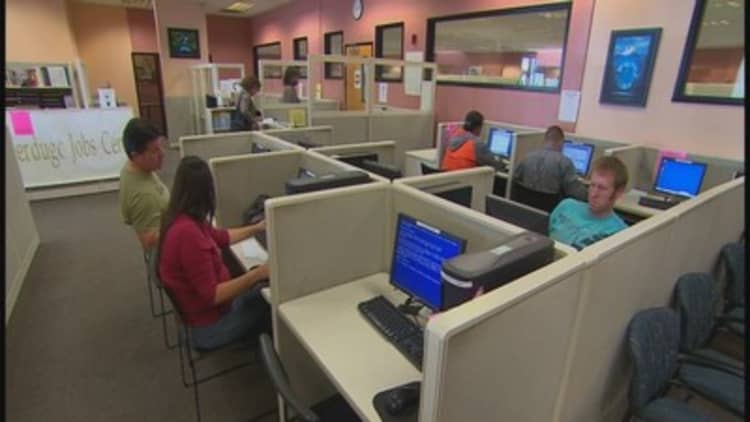While 2014 featured the biggest growth in 15 years, Friday's jobs report left at least one key constituency unimpressed.
The St. Louis branch of the Federal Reserve, in a brief post following the release of the nonfarm payrolls count, added to its rolling chart of the monthly gains.
However, in a tweet sent out Sunday, it focused not on the above-consensus gain of 252,000 gain for December, but rather on the overall trend.
The focus on the report showing the smallest increase in four months runs counter to the enthusiasm from most economists, who saw the numbers as reflecting a strong year that was the best since 1999.

From the Fed's perspective, it's hardly news that the overall job trend is higher. The headline rate dropped a full percentage point to close the year at 5.6 percent, and the monthly average for job creation in 2014 was 246,000, representing a gain of 52,000 over 2013's trend.
Read MoreOur trouble with jobs: The pay stillstinks
But the calculus for coming off six years' worth of zero interest rates is more complicated.
Behind the healthy numbers were several other more sobering statistics: a 5-cent an hour drop in hourly wages, translating into a meager 1.7 percent annualized pay increase; an average unemployment duration of 32.8 weeks, or near where it was in early 2010; and a labor force participation rate at its lowest in 36 years.
Read MoreFed's Evans: I wouldn't hike rates before 2016
The Fed, of course, has a dual mandate: price stability and full employment. While the economy inches closer to the latter goal, there still is plenty of room to move in terms of inflation. Wage growth of less than 2 percent puts the Fed in less urgent position in terms of rate increases.
Interestingly, St. Louis Fed President James Bullard, who traditionally has leaned dovish but of late has cautioned that tightening could come earlier than market expectations, speaks later Monday in Chicago.






